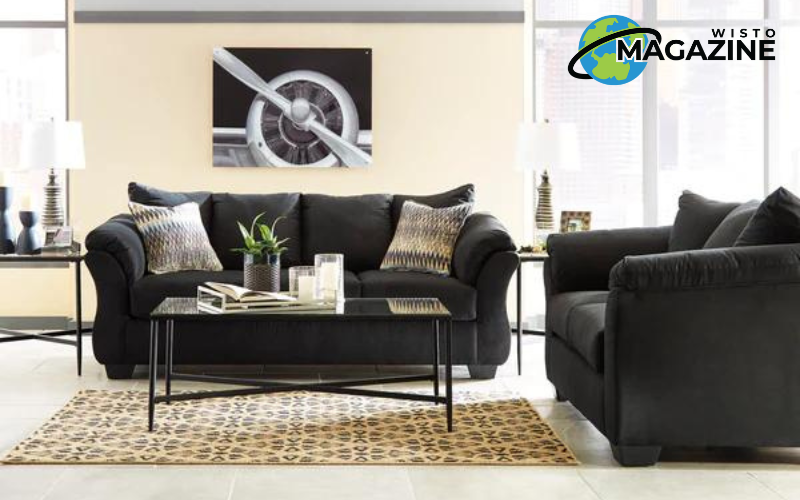Introduction
Regency furniture encapsulates an era of grandeur, luxury, and sophisticated design. Rooted in the early 19th century during the reign of King George IV in Britain, the Regency period left an indelible mark on furniture design.
Today, Regency furniture continues to enchant homeowners, interior designers, and collectors alike, blending classic elegance with the comforts of modern living. This fusion creates a timeless appeal that transcends generations and trends, making Regency furniture a sought-after choice for those seeking sophistication and grace in their homes.
Historical Significance of Regency Furniture
The Regency era marked a transition in furniture design, characterized by a departure from the heavy, ornate styles of the preceding periods. Influenced by neoclassical designs, Regency furniture embraced simplicity, symmetry, and elegance.
Mahogany, rosewood, and satinwood were favored materials, crafted into graceful, streamlined pieces with delicate ornamentation. Chairs, tables, cabinets, and chaise longues exhibited refined details, including tapered legs, inlay work, and motifs inspired by ancient Greece and Rome.
Classic Elements of Regency Furniture
One of the defining features of Regency furniture is its commitment to classicism. Designs often incorporated elements such as Grecian scrolls, acanthus leaf carvings, and lyre-shaped backs in chairs. The use of brass or gilt metal mounts added a touch of glamour to cabinets and tables.
Upholstery in luxurious fabrics like silk or damask adorned sofas and chairs, complementing the woodwork’s rich tones. Regency furniture exuded sophistication through its symmetrical forms and attention to proportion, creating a sense of balance and harmony in any space.
The Influence of Regency Furniture in Modern Interiors
Despite originating centuries ago, the allure of Regency furniture remains undiminished in contemporary interior design. Designers and homeowners often integrate Regency-inspired pieces into modern spaces to add a touch of refinement and elegance.
A Regency-style sofa upholstered in a contemporary fabric becomes a focal point in a minimalist living room, effortlessly merging classic design with modern sensibilities. The clean lines and timeless appeal of Regency tables or cabinets complement various interior styles, from traditional to eclectic, offering versatility and sophistication.
Reviving Regency Furniture: Adaptation for Today’s Lifestyle:
While staying true to its classical roots, Regency furniture has evolved to accommodate the demands of modern living. Today’s reinterpretations feature adaptations such as increased comfort in seating, using plush cushions, and ergonomic designs without compromising the aesthetic essence.
Furniture makers blend traditional craftsmanship with innovative techniques to create durable and functional pieces that align with contemporary needs. This fusion ensures that Regency-inspired furniture not only retains its visual appeal but also caters to the comfort preferences of today’s homeowners.
Regency Furniture in Different Settings
Regency furniture’s adaptability transcends specific room settings, making it suitable for various spaces within a home. In the dining room, a Regency-style table surrounded by upholstered chairs adds a touch of sophistication to formal gatherings.
In bedrooms, a Regency-inspired canopy bed with its intricate details creates an ambiance of luxury and refinement. Even in outdoor settings, Regency-style garden furniture featuring elegant designs and durable materials can elevate the aesthetics of a patio or garden space.
Collecting and Preserving Regency Furniture
For collectors and enthusiasts, acquiring and preserving authentic Regency furniture is a pursuit of timeless elegance. Authentic pieces from the Regency era are prized possessions, often meticulously restored to their former glory.
Careful preservation involves regular maintenance, appropriate cleaning methods, and ensuring the right environmental conditions to prevent damage or deterioration. Additionally, reputable dealers or auction houses specializing in antique furniture can aid in acquiring genuine Regency pieces, contributing to the preservation of this rich heritage.
Conclusion
Regency furniture stands as a testament to the enduring allure of classic design fused with contemporary comfort. Its elegance and sophistication continue to captivate individuals passionate about interior design and historical craftsmanship.
Through a seamless blend of timeless aesthetics and modern functionality, Regency furniture transcends trends, offering a sense of refined luxury to spaces, be they traditional or modern. As the appreciation for timeless design persists, the legacy of Regency furniture remains a timeless treasure cherished by generations, seamlessly merging the past with the present in the realm of interior décor.

